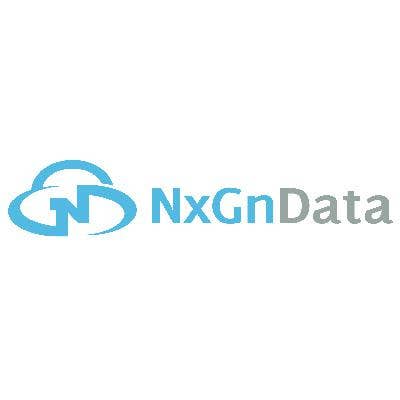The 10 Coolest Storage Startups Of 2014

Storage Startups: Disrupting The Status Quo
The storage industry is no stranger to startups. Indeed, there many who argue that much of the innovative new products and solutions from established vendors are developed by nimble startups who often then get acquired. Indeed, one such startup this year, DSSD, was out in the public eye just long enough for one large legacy storage vendor to announce its acquisition.
Not every startup will be acquired. Some might not survive. But a lucky few could become the next EMC or NetApp.
Who will make the cut? Here are 10 who came out of stealth mode in 2014 so you can judge for yourself.

A3Cube: Eliminating I/O Performance
CEO: Antonella Rubicco
A3Cube in February exited stealth mode with the introduction of its RONNIEE Express, a data plane that adds network intelligence to PCIe solutions. The San Jose, Calif.-based company's In-Memory Network technology allows direct shared, noncoherent global memory access across an entire network to reduce latency and enhance scalability and performance in Ethernet, InfiniBand and Fibre Channel networks.
A3Cube said RONNIEE Express enables exascale storage combining supercomputing-like massively parallel operations and an I/O interface that eliminates central switching to cut network overhead and decrease the latency of traditional storage networking designs.

CacheBox: Flash To Accelerate Applications
CEO: Lorenzo Salhi
San Carlos, Calif.-based CacheBox came out of stealth in August with the unveiling of CacheAdvance, a software-only, hardware-agnostic solution that leverages server-side flash storage to accelerate applications and optimize application data.
CacheAdvance, which as of this writing is in limited advance release, intelligently intercepts application I/O and determines which application elements could be accelerated to increase application performance. The company claims CacheAdvance can increase application performance by up to 100 times compared to hard drives, but requires no change to the underlying compute and storage infrastructure.
CacheBox is currently recruiting OEMs and solution providers.

DataGravity Manages, Analyzes Data
CEO: Paula Long
DataGravity in August came out of stealth mode with the launch of a new storage platform, the DataGravity Discovery Series, which helps customers manage their data and analyze it for business purposes.
Nashua, N.H.-based DataGravity, founded by the same team that founded EqualLogic before that company's 2008 acquisition by Dell, has raised about $92 million, including a $50 million round of funding unveiled in December.
The DataGravity Discovery Series appliances come in 48-TB and 96-TB versions with flash storage acceleration optimization. They provide information discovery by conducting searches natively at the point at which data is stored, and include built-in block, file and virtual machine data protection with snapshots.

DSSD Out Of Stealth Long Enough To Get Acquired
CEO: Bill Moore
DSSD in May came out of stealth mode for about two seconds when EMC said on stage at EMC World that it acquired the Menlo Park, Calif.-based developer of server-side flash storage and unveiled plans to use its technology to accelerate applications running in servers.
Unlike EMC's XtremIO all-flash storage array, which substitutes high-performance flash for disk to store data, DSSD is developing rack-scale server-side flash storage designed to speed up application performance. First shipments of DSSD-based solutions are expected in 2015.
EMC has yet to offer performance or capacity details of the DSSD rack-scale server-side flash device. However, it is expected to be faster than EMC XtremIO.

Formation Data Systems Unifies All Storage
CEO: Mark Lewis
Formation Data Systems, a Fremont, Calif.-based developer of unified storage to support all formats and media, in September came out of stealth mode with funding of $24 million including support from big-name investors such as Dell, Box CEO Aaron Levie, Seagate CEO Steve Luczo, Riverbed CEO Jerry Kennelly and InMage CEO Kumar Malavalli.
The company is developing Formation XV, or Formation eXtensible Virtualization, a storage virtualization technology based on standard off-the-shelf hardware featuring flash and spinning disk storage and API-based cloud storage. It includes a data connector that projects a virtualized data layer for any operation, letting applications see data as block, file or object storage as needed.

Nextbit Intros Baton Data Backup, Sync Technology
CEO: Tom Moss
San Francisco-based mobile storage technology developer Nextbit came out of stealth mode in January with the unveiling of $18 million in funding, and in October unveiled the Nextbit Baton mobile data backup and sync technology.
Nextbit Baton backs up and syncs all of a user's applications and data, giving users the ability to easily switch between devices while protecting data against loss from damaged or stolen devices. Nextbit, now in private beta, keeps applications in sync across multiple devices by letting an open application be sent in its current state to another device. All applications and data are saved in the cloud to prevent their loss.

Nimboxx: New Hyper-Converged Appliance Maker
CEO: Rocky Bullock
Hyper-converged infrastructure developer Nimboxx in June exited stealth mode with $12 million in new funding and the release of its first appliance combining storage, server, networking and virtualization technology.
The Nimboxx AU-110 hyper-converged infrastructure appliance features mesh-based scale-out, dynamic resource orchestration and self-balancing workloads. The solution also provides dynamic adaptation to cache and storage changes based on multidimensional workload analyses.
Deployments can start with a single node and scale to hundreds. The Nimboxx Mesh Operating System (MeshOS) installs on bare metal and allows for direct control over all hardware resources. MeshOS also offers a RESTful API for integration with third-party applications.

NxGn Joins Crowded SSD Market
CEO: Nader Salessi
Startup SSD manufacturer NxGn in July came out of stealth mode with plans to build SSDs based on its own high-performance controller. Founded by SSD veterans from sTec and Western Digital, the company is targeting hyperscale and cloud computing providers with SSDs that comply with the M.2 standard for use on small-form-factor cards.
The company's controller uses LDPC (low-density parity check) code in conjunction with low-cost consumer-grade flash chips to provide enterprise-quality reads and writes for such applications as cold storage, in which data is taken off the fastest storage medium when not being accessed but then moved back to high-speed mediums when needed.

OneCloud Software: Automating DR In AWS
CEO: Marc Crespi
Boston-based OneCloud Software in November came out of stealth at the AWS re:Invent conference where it introduced its OneCloud Recovery software for integrating existing data centers with Amazon Web Services. OneCloud Recovery provides automation, scalability and efficiency to help customers take a hybrid cloud approach to disaster recovery and business continuity.
OneCloud Recovery automates the creation of a virtual data center in AWS that can be used in place of a physical secondary data center. It integrates into existing VMware environments as a virtual appliance, and auto-discovers a company’s primary infrastructure. The software also automatically creates a virtual data center replica in AWS.

Snowflake Computing: Challenging Data Warehouse Status Quo
CEO: Bob Muglia
Snowflake Computing in October came out of stealth mode with a cloud-based data warehousing service it has positioned as a more flexible, easier-to-manage alternative to traditional on-premise data warehouses to compete with services such as Amazon Web Services' Redshift.
Snowflake, which as of October had raised $26 million in two rounds of venture financing, has former Microsoft and Juniper Networks executive Bob Muglia in the CEO chair.
The company's Snowflake Elastic Data Warehouse collects and analyzes both structured data from transactional IT systems and semi-structured machine data, and provides a 90 percent cost savings compared with on-premise data warehouse systems, the company said.